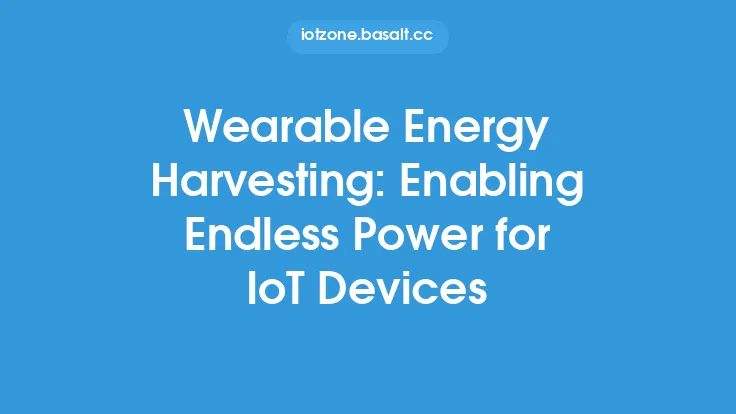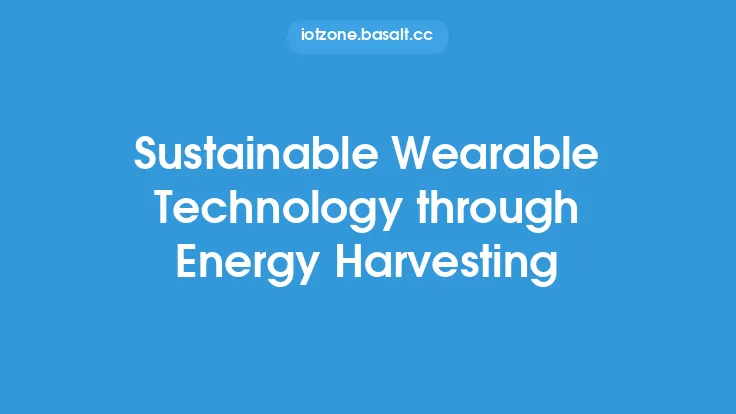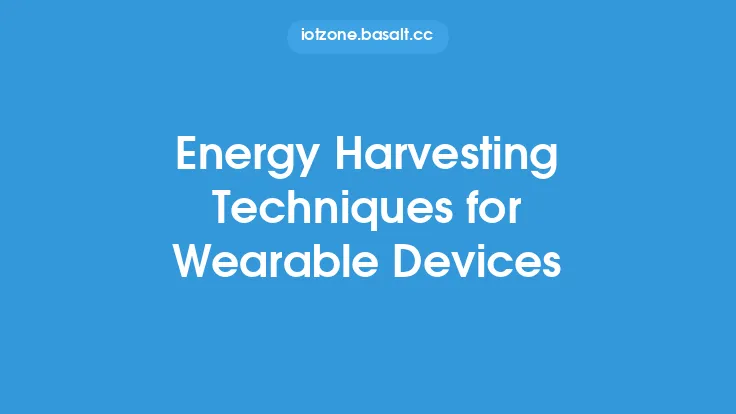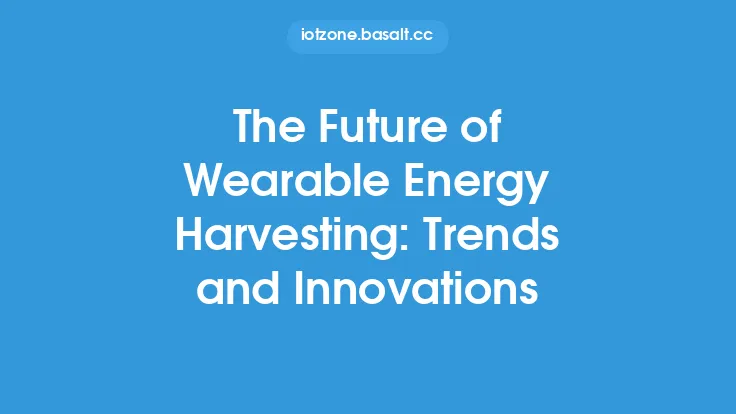The Internet of Things (IoT) has been rapidly expanding, with an increasing number of devices being connected to the internet. However, one of the major challenges facing the widespread adoption of IoT devices is the need for a reliable and sustainable power source. Traditional batteries have limitations in terms of size, weight, and lifespan, which can hinder the development of small, portable, and autonomous IoT devices. This is where wearable energy harvesting comes into play, revolutionizing the way IoT devices are powered and enabling a new generation of innovative applications.
Introduction to Wearable Energy Harvesting
Wearable energy harvesting refers to the process of capturing and converting ambient energy from the environment into electrical energy, which can be used to power wearable devices and IoT sensors. This technology has the potential to overcome the power limitations of traditional batteries, enabling the development of smaller, lighter, and more efficient devices. Wearable energy harvesting can be achieved through various methods, including piezoelectric, thermoelectric, electrostatic, and photovoltaic energy harvesting. Each of these methods has its own advantages and disadvantages, and the choice of method depends on the specific application and environment.
Types of Wearable Energy Harvesting
There are several types of wearable energy harvesting technologies, each with its own unique characteristics and applications. Piezoelectric energy harvesting, for example, involves the use of piezoelectric materials that generate an electric charge in response to mechanical stress, such as vibrations or movement. This method is particularly suitable for wearable devices that are subject to mechanical stress, such as smart shoes or fitness trackers. Thermoelectric energy harvesting, on the other hand, involves the use of thermoelectric materials that generate an electric current in response to temperature differences. This method is suitable for applications where there is a significant temperature difference, such as in wearable devices that are exposed to the environment.
Applications of Wearable Energy Harvesting
Wearable energy harvesting has a wide range of applications in the IoT sector, including wearable devices, smart homes, and industrial automation. In the wearable device sector, energy harvesting can be used to power devices such as smartwatches, fitness trackers, and smart glasses. This can enable the development of smaller, lighter, and more efficient devices that can be worn for extended periods without the need for recharging. In the smart home sector, energy harvesting can be used to power sensors and devices that monitor and control the home environment, such as temperature, lighting, and security systems. In the industrial automation sector, energy harvesting can be used to power sensors and devices that monitor and control industrial equipment, such as machinery and robots.
Technical Challenges and Limitations
While wearable energy harvesting has the potential to revolutionize the IoT sector, there are several technical challenges and limitations that need to be addressed. One of the major challenges is the low power output of energy harvesting devices, which can limit their ability to power devices that require high power consumption. Another challenge is the intermittent nature of energy harvesting, which can make it difficult to ensure a reliable and consistent power supply. Additionally, energy harvesting devices can be affected by environmental factors such as temperature, humidity, and vibration, which can impact their performance and lifespan.
Advantages and Benefits
Despite the technical challenges and limitations, wearable energy harvesting has several advantages and benefits that make it an attractive solution for IoT devices. One of the major advantages is the potential for infinite power, which can enable the development of devices that can operate indefinitely without the need for recharging. Another advantage is the reduced size and weight of devices, which can make them more comfortable and convenient to wear. Additionally, energy harvesting can reduce the environmental impact of IoT devices, as it eliminates the need for batteries and reduces electronic waste.
Future Developments and Trends
The future of wearable energy harvesting looks promising, with several developments and trends that are expected to shape the industry. One of the major trends is the increasing use of advanced materials and technologies, such as nanotechnology and artificial intelligence, to improve the efficiency and performance of energy harvesting devices. Another trend is the development of hybrid energy harvesting systems that combine multiple energy harvesting methods to increase power output and reliability. Additionally, there is a growing interest in the use of energy harvesting for IoT devices in harsh environments, such as industrial and military applications, where traditional power sources may not be reliable or practical.
Conclusion
In conclusion, wearable energy harvesting is a revolutionary technology that has the potential to transform the IoT sector by providing a reliable and sustainable power source for devices. While there are technical challenges and limitations that need to be addressed, the advantages and benefits of energy harvesting make it an attractive solution for IoT devices. As the technology continues to evolve and improve, we can expect to see new and innovative applications of wearable energy harvesting in various sectors, from wearable devices to industrial automation. With its potential for infinite power, reduced size and weight, and reduced environmental impact, wearable energy harvesting is an exciting and rapidly developing field that is worth watching in the coming years.





